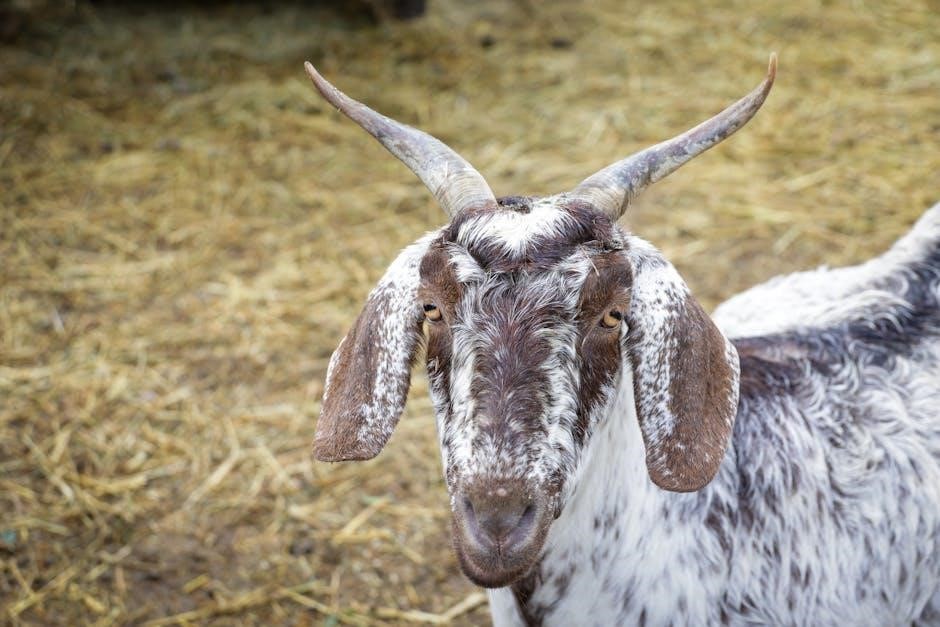This guide provides a comprehensive analysis of George Orwell’s Animal Farm, offering insights into its themes, characters, and historical context. It includes study questions, summaries, and critical essays to help students understand the novel’s allegorical significance and its exploration of power, corruption, and societal structures. The guide is designed to enhance comprehension and facilitate deeper discussion of Orwell’s timeless classic.
Background Information about George Orwell and Animal Farm
George Orwell, born Eric Arthur Blair in 1903, was a renowned English novelist, essayist, and critic. His experiences in the Spanish Civil War and his opposition to fascism deeply influenced his writing. Animal Farm, published in 1945, is an allegorical novella that critiques totalitarianism, particularly Stalin’s regime. Orwell’s unique storytelling style uses animals to represent historical figures and events, making complex political themes accessible. The book reflects his concern with power corruption and the loss of idealism. It remains a classic in political literature and is widely studied for its timeless relevance and thought-provoking commentary on human society.
Purpose of the Study Guide
The purpose of this study guide is to assist readers in gaining a deeper understanding of Animal Farm by providing comprehensive resources. It includes character analyses, themes, symbols, and study questions to facilitate critical thinking and discussion. The guide helps students identify key events, analyze motivations, and explore the novel’s allegorical connections to historical events. By breaking down complex concepts, it enables a more insightful reading experience, preparing students for essays, exams, and class discussions. The guide also offers practical tools for teachers to enhance lesson plans and engage students effectively.
Plot Summary of Animal Farm
Animal Farm tells the story of a group of barnyard animals who rebel against their drunken owner, Mr. Jones, inspired by Old Major’s vision of a better life. Led by pigs like Napoleon and Snowball, they establish a new order, but power struggles and corruption soon emerge, transforming their utopian dream into a dystopian reality. The novel explores themes of power, betrayal, and the cyclical nature of oppression through its allegorical narrative.
Overview of the Novel
Animal Farm by George Orwell is a novella that uses an allegory to depict the events leading up to the Russian Revolution of 1917 and then on into the Stalinist era of the Soviet Union. The story tells of a group of barnyard animals who rebel against their drunken owner, Mr. Jones, inspired by Old Major’s vision of a utopian society. The pigs, led by Snowball and Napoleon, take charge and establish a set of Seven Commandments to guide their new society. However, corruption and power struggles soon lead to the betrayal of the original ideals, resulting in a totalitarian regime indistinguishable from the one they initially rebelled against. Through this narrative, Orwell critiques the dangers of unchecked power, manipulation, and the erosion of equality.
Key Events and Turning Points
The novel begins with Old Major’s inspiring speech about rebellion, sparking the animals’ determination to overthrow Mr. Jones. The Rebellion itself is a pivotal moment, leading to the establishment of Animal Farm. The creation of the Seven Commandments and the early success of the farm showcase the animals’ unity. However, tension arises as Snowball and Napoleon’s power struggle intensifies, culminating in Snowball’s expulsion. The Battle of the Cowshed and the destruction of the windmill are key events that highlight Napoleon’s manipulation and the animals’ diminishing hope. Finally, the pigs’ transformation into indistinguishable “humans” marks the tragic betrayal of the revolution’s ideals.
Significance of the Ending
The ending of Animal Farm underscores the tragic betrayal of the revolution’s ideals. The pigs, now indistinguishable from humans, embody the corruption of power, as they embrace the very practices they initially rebelled against. The alteration of the Seven Commandments to “All Animals are Equal / But Some Animals are More Equal than Others” highlights the pigs’ hypocrisy and the erosion of equality. This conclusion serves as a stark commentary on the dangers of totalitarianism and the inevitable corruption of power, leaving the animals in a state of disillusionment. Orwell’s ending emphasizes the cyclical nature of oppression and the loss of hope for true equality.
Character Analysis
The novel explores the roles of key animals like Napoleon, Snowball, Boxer, and Clover, highlighting their distinct personalities and contributions to the farm’s evolving dynamics and conflicts.
Major Characters: Napoleon, Snowball, Boxer, and Clover
Napoleon, a manipulative and power-hungry pig, emerges as the leader of Animal Farm, using propaganda to maintain control. Snowball, an idealistic pig, represents the intellectual force behind the revolution but is driven out by Napoleon. Boxer, a loyal and hardworking horse, embodies dedication and sacrifice, while Clover, a caring mare, serves as a voice of reason. Their contrasting personalities and roles highlight the complexities of power, loyalty, and corruption, making them central to the novel’s exploration of societal dynamics and political allegory.
Minor Characters: Benjamin, Mollie, and The Cat

Benjamin, the wise and cynical donkey, remains detached from the farm’s political turmoil, often seeing through the pigs’ manipulation. Mollie, a vain and self-indulgent mare, represents the desire for comfort and luxury, ultimately abandoning the farm. The Cat, sly and manipulative, symbolizes deceit and exploitation, using its charm to influence others. These characters highlight themes of apathy, selfishness, and cunning, adding depth to the novel’s exploration of societal roles and moral decay.
The Role of Animals in Representing Historical Figures
In Animal Farm, the animals symbolize key figures from the Russian Revolution. Napoleon represents Joseph Stalin, seizing power and manipulating others for control. Snowball, driven away by Napoleon, mirrors Leon Trotsky, who was exiled by Stalin. Boxer embodies the working class, exploited for their labor and loyalty. The pigs, particularly, symbolize the Communist Party leaders, corrupted by power. Benjamin, the skeptical donkey, represents those who see through propaganda but remain passive. These allegorical portrayals allow Orwell to critique the rise of totalitarianism and the betrayal of revolutionary ideals, making the novel a powerful commentary on human history and political corruption.
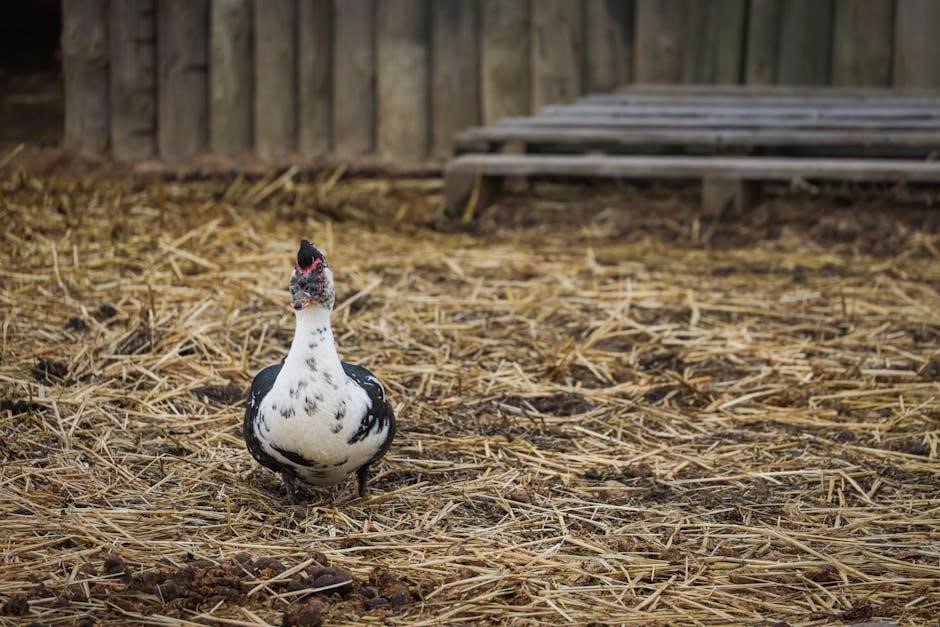
Themes in Animal Farm
Themes include the corruption of power, dangers of totalitarianism, class struggle, betrayal, and manipulation. These themes serve as a warning against authoritarianism and the exploitation of power.
The Corruption of Power
In Animal Farm, the corruption of power is a central theme, as the pigs gradually abuse their authority. Initially, the pigs lead the revolution with noble ideals, but over time, they exploit their power for personal gain. Napoleon, in particular, manipulates the Seven Commandments to justify his actions, such as trading with neighboring farms and living in luxury. The pigs’ corruption mirrors the dangers of authoritarianism, where those in power prioritize their interests over the well-being of others. Orwell uses this theme to warn against the exploitation of power and the erosion of equality in societies governed by greed and ambition.
The Danger of Totalitarianism
Orwell’s Animal Farm vividly illustrates the dangers of totalitarianism through Napoleon’s rise to power. The pigs, led by Napoleon, gradually consolidate control, suppressing dissent and manipulating information to maintain authority. Squealer’s role in rewriting history and distorting the truth highlights how totalitarian regimes often use propaganda to justify their actions. The pigs’ complete control over the farm’s resources and decisions mirrors the oppressive nature of authoritarian governments. Orwell critiques how totalitarianism erodes individual freedom and promotes a cult of personality, as seen in Napoleon’s unchecked rule. The novel serves as a warning against the dangers of unchecked power and the loss of democratic ideals.
The Class Struggle and Equality
In Animal Farm, Orwell explores the theme of class struggle and equality through the animals’ rebellion against Mr. Jones. Initially, the animals unite under the principle of equality, as expressed in the Seven Commandments. However, as the pigs consolidate power, they exploit their position, altering the rules and prioritizing their own interests over others. This mirrors real-world class struggles, where those in power often undermine equality for personal gain. The pigs’ manipulation of resources and decision-making highlights the failure of revolutions to achieve true equality, as new elites emerge to exploit the system, leaving the working class oppressed once again.
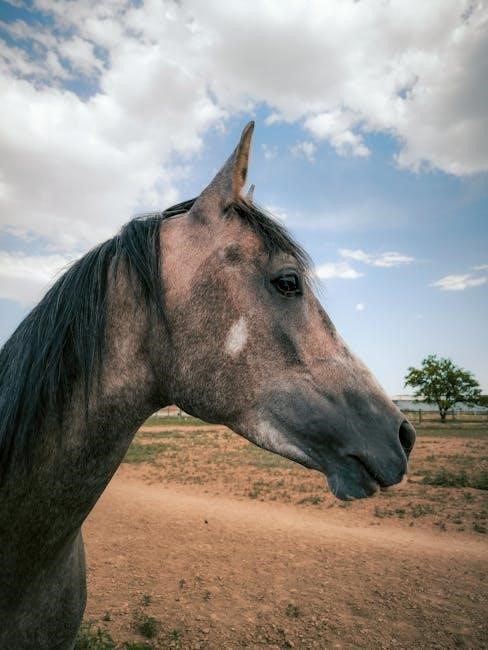
Symbols in Animal Farm
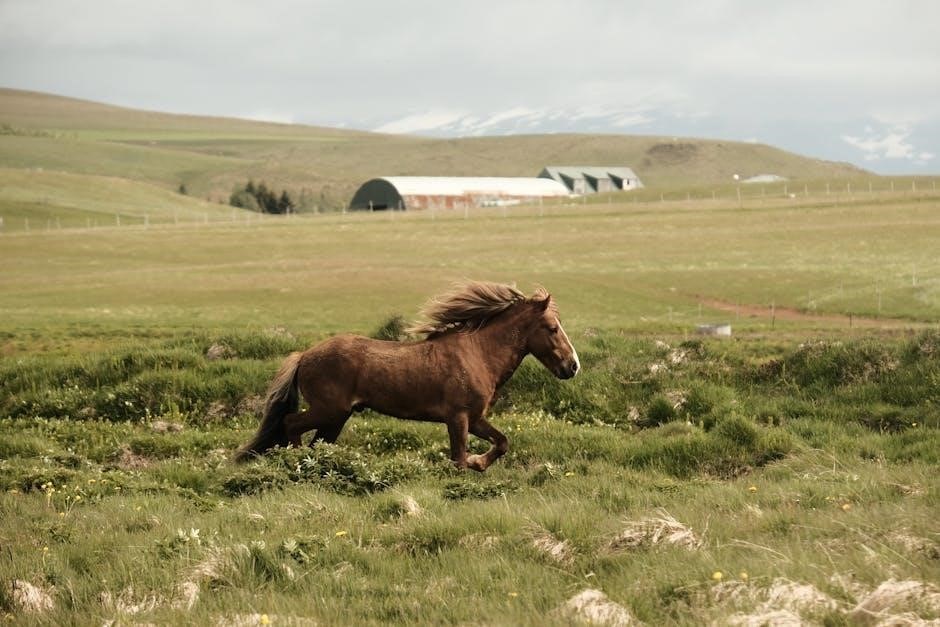
Orwell uses symbols like the Seven Commandments, the windmill, and the song “Beasts of England” to represent themes of power, progress, and unity, enriching the novel’s allegorical depth.
The Seven Commandments
The Seven Commandments, painted on the barn wall, serve as the foundation of Animalism, the ideology of the rebellion. They represent the moral and ethical guidelines for the animals, emphasizing equality and unity. The commandments include rules like “Whatever goes upon two legs is an enemy” and “No animal shall kill any other animal.” These principles are gradually altered by the pigs to justify their corruption of power, highlighting the theme of how power corrupts even the noblest ideals. The commandments symbolize the animals’ aspirations for a fair society and the eventual betrayal of those ideals by their leaders.
The Windmill as a Symbol of Progress
The windmill in Animal Farm symbolizes the animals’ aspirations for progress and a better future. Initially, it represents collective effort and hope, as the animals work together to build it. However, the windmill’s destruction and rebuilding reflect the corruption of power and the exploitation of the animals’ labor by the pigs. It becomes a tool for Napoleon to consolidate his authority, showing how ideals of progress can be manipulated for personal gain. The windmill’s fate mirrors the disillusionment of the animals, highlighting the tension between genuine progress and the abuse of power.
The Song “Beasts of England”

The song “Beasts of England” serves as a powerful anthem for the animals’ rebellion against oppression. It is inspired by Old Major’s vision of a utopian future and becomes a unifying force, igniting hope and determination among the animals. The song’s emotional impact strengthens their resolve to overthrow their oppressors and strive for equality. However, as the pigs’ corruption grows, the song is eventually banned by Napoleon, who fears it may inspire rebellion against his regime. Its suppression symbolizes the loss of the original revolutionary ideals and the erosion of the animals’ unity and spirit. It remains a poignant reminder of their forgotten aspirations.
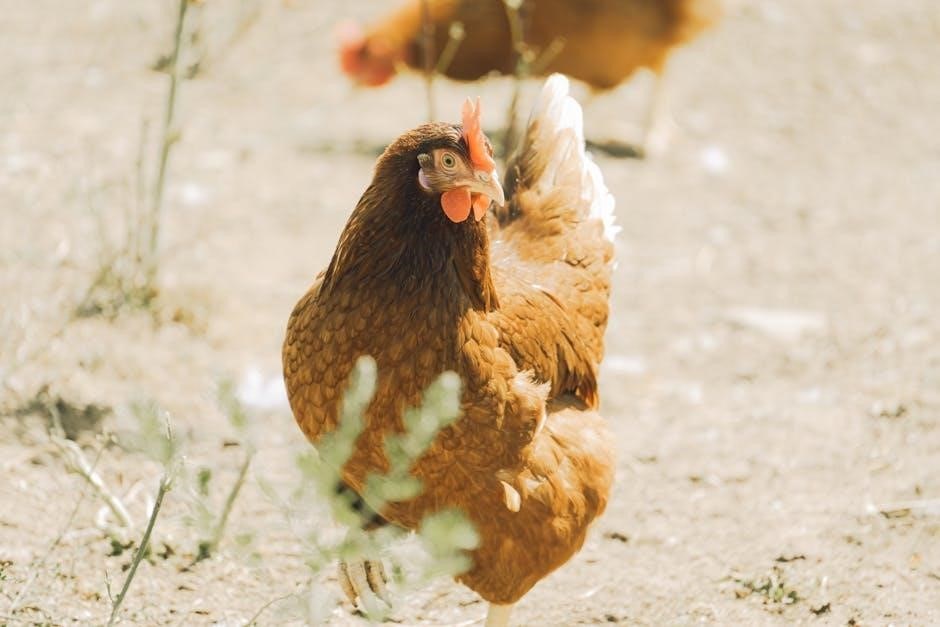
Study Questions and Answers
This section provides a variety of questions and answers to enhance understanding of Animal Farm. It includes comprehension questions, critical thinking prompts, and discussion topics to foster deeper analysis and engagement with the novel’s themes, characters, and historical context.
Comprehension Questions
These questions are designed to test understanding of key plot points, characters, and events in Animal Farm. Examples include: What inspired Old Major to gather the animals? How did the pigs justify their actions? Why did Boxer remain loyal despite hardships? What role did the Seven Commandments play? How did Napoleon and Snowball differ? What caused the animals’ rebellion? How did the pigs manipulate the farm’s rules? What symbolism does the windmill hold? Answering these questions helps students grasp the narrative and its themes, ensuring a solid foundation for further analysis.
Critical Thinking Questions
These questions encourage deeper analysis of themes, motifs, and character dynamics. Examples include: How does the novel critique totalitarianism? What message does Orwell convey about power corruption? Why is Benjamin’s perspective unique? How does the pigs’ manipulation of language affect the story? What does Boxer’s fate symbolize? How does the ending reflect Orwell’s view of revolution? These questions prompt students to think critically about the novel’s layers of meaning, connecting plot elements to broader societal themes. Answering them helps develop analytical skills and understanding of Orwell’s intent.
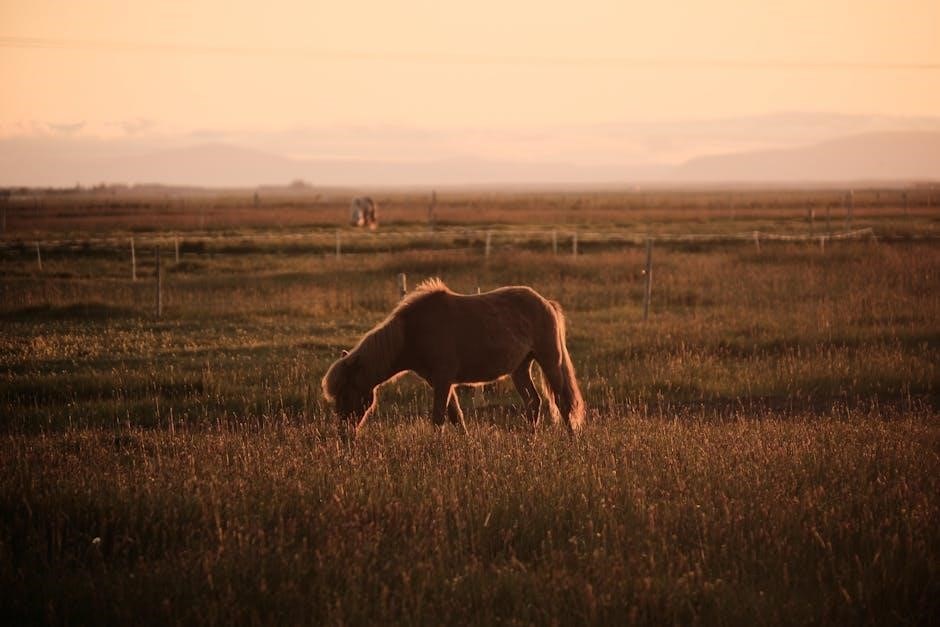
Discussion Prompts
What does the pigs’ gradual takeover of power reveal about the nature of leadership and corruption? How does the novel portray the consequences of manipulation and propaganda? What role does education play in controlling the narrative on the farm? How does the ending challenge or reinforce your understanding of revolution and equality? In what ways can the themes of Animal Farm be applied to real-world political or social movements? How does the character of Boxer symbolize working-class exploitation? What does the pigs’ alteration of the Seven Commandments suggest about the flexibility of rules and ideology? These prompts encourage group debate and reflection on the novel’s timeless themes.
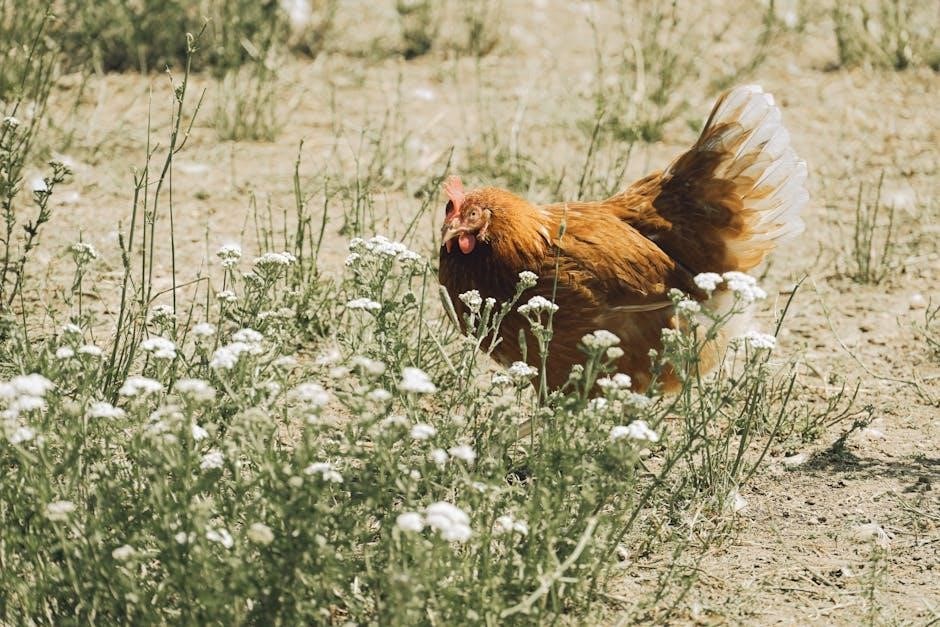
Essay Topics and Writing Prompts
Analyze the theme of power corruption in Animal Farm. Discuss the role of education in manipulating the animals. Explore how historical events inspired the novel’s allegory. How does Orwell critique totalitarianism? What does Boxer’s character represent? These prompts encourage in-depth analysis of the novel’s themes, characters, and historical context.
Themes and Symbolism
In Animal Farm, Orwell explores themes of power corruption, totalitarianism, and class struggle. The pigs’ rise to dominance symbolizes how power corrupts, while the Seven Commandments represent ideals distorted over time. The windmill, initially a symbol of progress, becomes a tool of manipulation, highlighting the exploitation of the working class. The song “Beasts of England” embodies the animals’ collective hope for rebellion and unity. These elements serve as allegorical representations of historical events, such as the Russian Revolution, and warn against the dangers of unchecked authority and propaganda. Orwell’s use of symbolism enriches the narrative, offering timeless lessons on governance and morality.
Character Development and Analysis

Napoleon evolves from a unifying leader to a corrupt dictator, mirroring historical figures who abuse power. Snowball, the idealistic visionary, represents lost potential when chased away by Napoleon. Boxer’s unwavering loyalty and dedication highlight the exploitation of the working class, while Clover’s compassion and awareness embody moral conscience. Benjamin, the cynical donkey, serves as a voice of reason, questioning authority. Mollie’s vanity and desertion illustrate the allure of luxury over collective goals. The pigs’ transformation from revolutionary leaders to tyrants underscores Orwell’s critique of corruption and the dangers of unchecked ambition, offering profound insights into human nature and societal dynamics.
Historical Context and Allegory
Animal Farm is a powerful allegory for the Russian Revolution and the rise of Stalinism. Orwell critiques the corruption of communist ideals through the pigs’ gradual abuse of power. The novel mirrors historical events, with Napoleon representing Stalin, Snowball symbolizing Trotsky, and the Seven Commandments reflecting the Communist Manifesto. The pigs’ manipulation of power and the exploitation of other animals illustrate the dangers of totalitarianism. Orwell’s allegory not only critiques Soviet communism but also explores universal themes of power, corruption, and the erosion of ideals. This historical lens provides deeper insight into the novel’s warning against authoritarian regimes and the loss of revolutionary ideals.
Additional Resources
For deeper understanding, explore SparkNotes, Quizlet, and CliffsNotes for detailed summaries, analysis, and study aids. Additional resources include recommended reading lists and online educational platforms offering essay prompts and historical context to enhance your study of Animal Farm.
Recommended Reading for Deeper Understanding
For a richer understanding of Animal Farm, explore resources like SparkNotes, CliffsNotes, and Quizlet for detailed analyses and study aids. Additionally, consider reading George Orwell’s essays and historical context books about the Russian Revolution, as they provide insight into the novel’s allegorical themes. Workbooks and teacher guides, such as the Grade 9-1 GCSE English Workbook, offer structured study materials and essay prompts. Online platforms like LitCharts and Course Hero also provide summaries, character analyses, and discussion prompts to deepen your exploration of the novel’s themes, symbols, and historical relevance.
Online Resources and Study Aids
Utilize online platforms like Quizlet for flashcards on characters and themes, and SparkNotes or CliffsNotes for detailed chapter summaries and analyses. LitCharts offers visual guides and infographics to enhance understanding, while Course Hero provides Q&A forums and study guides. Grade 9-1 GCSE English Workbooks include structured exercises and essay prompts. Websites like StudyFinder and LitRes provide chapter-by-chapter breakdowns and historical context. These resources offer interactive tools, discussion prompts, and expert insights to aid in analyzing Orwell’s allegory and preparing for exams or essays. They are invaluable for students seeking to deepen their understanding of Animal Farm and its complex themes.
